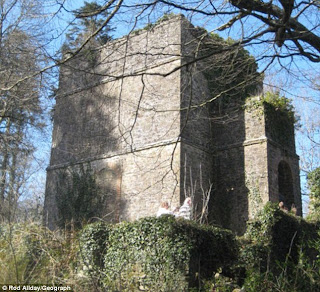 |
| Sir James Tillie |
An excavation of a mausoleum in the grounds of Pentillie Castle in Cornwall is thought to have uncovered the body of Sir James Tillie, who died 300 years ago in 1713.
Sir James, who built the home in 1698, left instructions that on his deathbed he should not be buried. Instead he was to have been dressed in his best clothes, bound to a stout chair and placed with his books, wine and pipe in his favourite folly to await resurrection.
His servants are believed to have brought him wine for two years until, unable to bear their macabre orders any longer, they had his remains interred and a marble statue built in his place.
 |
| Pentillie Castle Vault |
Archaeologist Oliver Jessop, who had been recording the historic fabric of the building, and building surveyor Richard Glover said: "It is a very exciting find. The discovery of this body in the vault contradicts local tradition and adds another twist to the eccentric goings on of the Coryton family."
 |
| Pentillie Castle Vault - Restored |
Ted Coryton, who has been restoring Pentillie Castle with his family since inheriting it in 2007, was present when the vault was opened.
"It was an exciting moment, to finally uncover the truth and to know that Sir James was in fact in his mausoleum," he said. "Over the past five years we have researched much about him and the castle, so to finally tie up the loose ends was extraordinary.
"There is no doubt these are very old remains, and all indications are that it is likely to be Sir James Tillie. There was no sign of his pipe, books or wine but there was the remains of a chair that looks typical to the 1700s when he would have been placed there."
The public will be able to view Pentillie Castle's gardens over the coming months, but will not be able to visit the mausoleum.
Story: msn.com






![]()
